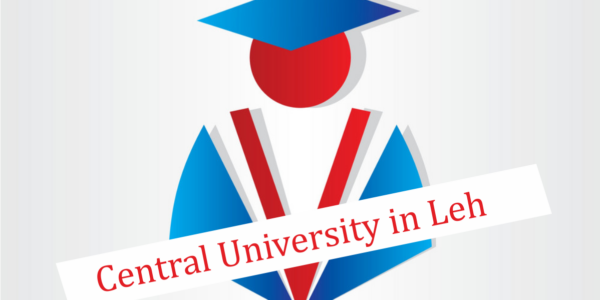Central University in Leh: The Heart of NEP 2020 Omitted
The New National Policy on Education 2020 is a comprehensive and historic policy that comes after the long gap of thirty-four years after the National Policy on Education 1986 and its Programme of Action 1992. It was the long-cherished dream of India to make an inclusive policy on education, which cater to the need of the diversity of our country. However, the BJP government’s announcement to establish a Central University in Leh district of Ladakh is contradicting the commitment of the newly formed NEP 2020, which focuses on inclusion and accessibility.
The policy document on New Education Policy 2020 has promised to deliver a world-class education by extending the network of education from preprimary to higher education. The target of the policy is to achieve a 50 percent Gross Enrollment Ratio in higher education by 2035. To achieve this target the policy focus on the digital and correspondent courses by leveraging the advantages of technology. For this, the policy encourages and extends the already existing online learning platform like DIKSHA, SWAYAM, SWAYAMPRABHA, and e-PG Pathshala. These efforts are making to ensure maximum accessibility of education at every doorstep and no student would leave behind due to the inaccessibility of physical campuses.
Accessibility and inclusion are the two vigorous pillars of NEP 2020 and the policy is revolving around these two concepts. By accessibility, it ensures that students have equal and equitable opportunities to take full advantage of their education; by removing any potential barriers that might prevent students from equitable participation in certain courses or academic programs. Whereas inclusion which is termed the ‘heart’ of this policy refers, that the policy designed to avoid segregation and isolation of marginalized, ethnic, regional, and linguistic minorities and ensures maximum participation of students, whether it’s in primary or higher education.
* Click to Follow Voice of Ladakh on WhatsApp *
On February 1, 2021, the finance minister Nirmala Sitharaman while presenting the Union Budget of 2021, gave a detailed presentation on the education sector along with other sectors, in her two-hour-long speech. The education sector was the prime focus among stakeholders because it was the first budget after the new education policy of 2020 which was brought into the public domain by the NDA government on July 19 last year.
In the education sector, among other declarations, the big announcement was the proposal of Central University in Leh. The finance minister affirming that the aim of the Central University is for the better accessibility of higher education for students who reside in Ladakh.
So, the accessibility was the first target of the ministry when deciding to establish the Central University in Leh. So, it’s important to understand the term ‘accessibility’ in education first before we move forward and to know what the parameters are, that we can judge the accessibility of education.
In sample language, the term access typically refers to how educational institutions and policies ensure—or at least strive to ensure—that students have equal and equitable opportunities to take full advantage of their education. Besides this, the geographical feature of a region, distance from institution to home, socio-economic condition of parents, gender, caste are some major parameters on which we can evaluate the accessibility of education in a particular region or area.
By referring to the statement of the finance minister the decision of Central University in Leh seems ambiguous. Because, Ladakh separated over a wide geographical area of 59, 146 square kilometers and the people are living in barren mountain valleys, isolated villages, and inaccessible terrains.
To decide the establishment of Central University in Leh by ignoring the half of the population in different regions of Kargil district is contradicting the commitment of novice NEP 2020, which focuses on inclusion and accessibility. The sectors like Zanskar, Drass, Karchay and Suru which has the largest chunk of population have to again migrate to Leh as currently in Jammu, Delhi etc.
The decision is openly discriminating the Kargil district as like earlier decision of the Cluster University of Ladakh. The discrimination and barricading to access for education is deeply unfortunate and against the ethos of the constitutional guarantee of equality; which treats all citizens of India as equal and disapprove any discrimination based on class, region, religion, caste, and gender. To provide the special privilege of one region over another is condemnable act that need to rectify as early as possible.
The decision to set up the campus in Leh seems a hypothetical decision without considering the topographical and physiographical features of the region. For some people, it may be suitable but in general, students have to cover hundreds of kilometers to access the university, which will be a demotivating factor for students to join higher education. That we already witnessed during the admission process of Cluster University when the University withdraws its admission entrance test due to poor response from the students.
We as Ladakhi hope that the government would uphold this decision to setup Central University in Leh by ignoring the largest population of the region. They will come with a well thought and constructive decision. So that maximum students from diverse backgrounds can take benefit from the University.
1 Comments
Leave a Reply

There is only one solution,, ………..